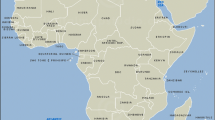Abstract
The communist mining industry has been one of the main pillars of Romania’s state economy. The problems resulted from what was at the time a highly unsustainable state program constitutes the main motivation to investigate the possible consequences of Romania’s economic past. The purpose of this paper is to demonstrate that without serious measures, pollution continues to persist in abandoned mining areas. In order to achieve this, the quality of the environment around two mining sites with similar characteristics has been evaluated. The difference between the two sites consists of a mine water treatment plant at the Mestecăniș unit, as opposed to the mine water being directly discharged into the main stem watercourse in Isipoaia—the Isipoaia Creek. In evaluating the impact, data from the Environmental Protection Agency, SC CARTEL BAU SA Cluj Napoca, S.C. CONVERSMIN SA, was used. Two impact evaluation methods were used: a quantitative method by calculating the global pollution index (GPI) and a qualitative method with the help of the Leopold matrix, adapted to the specificities of the mining activity. This comparative impact assessment is the first of its kind for the mining area and emphasizes the urgent need for a re-evaluation of the other 39 similar mining perimeters by prioritizing and speeding up the ecological rehabilitation measures. This raises the question of what solutions are best fitted to capitalize on and to further utilize the slurry resulted from the treatment of mine waters performed for the closing of the life cycle of the mining product.


















Similar content being viewed by others
Data availability
All data is provided.
Code availability
Not applicable.
References
Balaban SI, Iancu OS, Dill HG, Prundeanu IM (2012) The mobility of heavy metals in mine tailings associated with polymetallic ore mining activities in the Eastern Carpathians, Romania. Analele Ştiinţifice ale Universităţii Alexandru Ioan Cuza din Iaşi, seria Geologie 58(2)
Barbieri M, Sappa G, Nigro A (2017) Soil pollution: anthropogenic versus geogenic contributions over large areas of the Lazio region. J Geochem Explor 195. https://doi.org/10.1016/j.gexplo.2017.11.014
Basta N, Ryan JA, Chaney R (2005) Trace element chemistry in residual-treated soil: key concepts and metal bioavailability. J Environ Qual 34:49–63
Damian GH, Oros V (2000) Reabilitarea ecologică şi managementul siturilor degradate din industria minieră. Editura Universităţii de Nord, Baia Mare
Effendi H (2016) River water quality preliminary rapid assessment using pollution index. Proc Environ Sci 33:562–567. https://doi.org/10.1016/j.proenv.2016.03.108
Environmental Protection Agency Suceava (EPA Suceava), Archive documents, last accessed: 2019/10/30
Institute for Research and Mining Exploration Baia Mare (1998) Documentation necessary for obtaining an environmental agreement for the closure of the mining perimeter Mestecăniș (archives of the Environmental Protection Agency Suceava)
IPROMIN SA București (2008) Documentation necessary for obtaining an environmental agreement for the closure of the mining perimeter Leșu Ursului Mining Exploitation, including the Preparation Unit Tarnița (archives of the Environmental Protection Agency Suceava)
Leopold LB, Clarke FE, Hanshaw BB, Balsley JR (1971) A procedure for evaluating environmental impact in geological survey circular 645. USGS, Washington DC
Rojanschi V, Bran F (2002) Politici şi strategii de mediu, Bucureşti, Ed. Economică
Shaid A (2014) Methodological limitations of determining global pollution index as a tool for environmental impact assessment and a proposed extension. Environ Ecol Res. https://doi.org/10.13189/eer.2014.020603
Funding
Self-funded
Author information
Authors and Affiliations
Corresponding author
Ethics declarations
Conflict of interest
The authors declare that they have no competing interests.
Ethics approval
Not applicable.
Consent to participate
Not applicable.
Consent for publication
The authors give their full consent for the publication of this paper.
Additional information
Responsible Editor: Broder J. Merkel
This paper was selected from the 3rd Conference of the Arabian Journal of Geosciences (CAJG), Tunisia 2020
Rights and permissions
About this article
Cite this article
Ionce, R., Florea, F. An impact evaluation of the pollutive effect of mine waters from two abandoned mining sites in the Suceava County, Romania. Arab J Geosci 14, 2711 (2021). https://doi.org/10.1007/s12517-021-09090-z
Received:
Accepted:
Published:
DOI: https://doi.org/10.1007/s12517-021-09090-z




